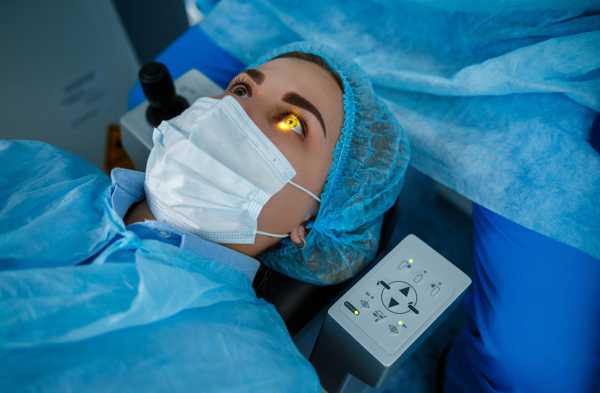New Horizons in Leukemia Treatment: Breakthroughs and Innovations in Patient Care
Leukemia, a cancer that impacts the blood and bone marrow, has long posed significant challenges in treatment. Traditional approaches such as chemotherapy, radiation therapy, and bone marrow transplants have been used, but they come with severe side effects and risks. However, recent progress in medical research offers renewed hope for leukemia patients, with therapies that are more targeted, personalized, and less damaging to healthy cells.
Leukemia, a cancer that impacts the blood and bone marrow, has long posed significant challenges in treatment. Traditional approaches such as chemotherapy, radiation therapy, and bone marrow transplants have been used, but they come with severe side effects and risks. However, recent progress in medical research offers renewed hope for leukemia patients, with therapies that are more targeted, personalized, and less damaging to healthy cells.

1. Immunotherapy: Boosting the Body's Natural Defenses
Immunotherapy has emerged as one of the most promising advancements in cancer treatment, showing significant potential for leukemia patients. This treatment aims to enhance or modify the immune system to better recognize and fight cancerous cells. Some of the leading approaches in leukemia treatment include:
- CAR-T Cell Therapy (Chimeric Antigen Receptor T-Cell Therapy): This pioneering therapy involves extracting a patient’s T cells, modifying them in the lab to improve their ability to target leukemia cells, and then reintroducing them back into the patient’s body. CAR-T therapy has been particularly effective in treating acute lymphoblastic leukemia (ALL) and chronic lymphocytic leukemia (CLL), especially in cases where the leukemia has relapsed or resisted other therapies.
- In 2017, the FDA approved Kymriah(tisageneceuce) for treating ALL in chidren and young aduts, as we as Yescarta (axicabtagene cioeuce) for arge B-ce ymphoma, which aso shows promise for certain eukemia types.
- Research into CAR-T therapy is ongoing, with trias examining its efficacy for various eukemia subtypes and exporing combinations with other treatments.
- Checkpoint Inhibitors: These drugs work by bocking proteins that prevent the immune system from attacking cancer ces. Pembroizumab(Keytruda) and nivoumab (Opdivo) are two checkpoint inhibitors being expored for the treatment of reapsed or refractory CLL and Hodgkin’s ymphoma. By disabing the "brakes" on the immune system, these inhibitors may aow the body’s immune system to more effectivey identify and destroy eukemia ces.
2. Targeted Therapies: Tailored Treatments for Leukemia
Targeted therapies are designed to specifically disrupt molecules that contribute to the growth and survival of leukemia cells. Unlike traditional chemotherapy, which damages both healthy and cancerous cells, targeted therapies focus on leukemia cells, reducing collateral damage to healthy tissue.
- Tyrosine Kinase Inhibitors (TKIs): These drugs block the activity of tyrosine kinases, enzymes that promote leukemia cell growth. Imatinib(Gleevec), one of the most well-known TKIs, transformed the treatment of chronic myelogenous leukemia (CML) by targeting the BCR-ABL fusion protein responsible for the disease.
- Newer TKIs, such as bosutinib, dasatinib, and niotinib, provide additiona options for CML patients who are resistant to imatinib, offering treatment with fewer side effects.
- BCL-2 Inhibitors: Venetocax(Vencexta) is a targeted drug that bocks the BCL-2 protein, which heps eukemia ces survive. This therapy has been particuary effective in treating CLL and acute myeoid eukemia (AML), and when combined with other drugs, it has produced impressive resuts in patients with high-risk eukemia who have not responded to other treatments.
- FLT3 Inhibitors: Midostaurin(Rydapt) and giteritinib (Xospata) are FLT3 inhibitors that target a mutation frequenty found in AML. These drugs have shown improved outcomes, particuary when used in conjunction with chemotherapy.
3. Gene Therapy and CRISPR: Editing the Blueprint for Leukemia Treatment
Gene therapy, including the revolutionary CRISPR-Cas9 gene-editing technology, is one of the most promising areas of leukemia research. This technique allows for precise changes to the genetic material of cells, potentially correcting or replacing genes responsible for leukemia’s progression.
- CRISPR and Leukemia: Researchers are investigating how CRISPR can be used to modify the genes of immune ces, making them more effective at recognizing and attacking eukemia ces. Athough sti in the eary stages, the potentia for CRISPR to deveop personaized therapies for eukemia is immense.
- Gene Editing for Immunotherapy: Another exciting possibiity invoves using gene editing to enhance the cancer-fighting capabiities of a patient's own immune ces, such as T ces or natura kier (NK) ces. This coud create a more powerfu and personaized approach to immunotherapy.
4. Epigenetic Therapy: Altering the Instructions for Leukemia Cells
Epigenetics involves changes in gene expression that do not alter the DNA sequence itself. These changes can play a key role in the development and progression of leukemia. Epigenetic therapies aim to modify these factors, potentially halting leukemia’s uncontrolled growth.
- DNA Methyation Inhibitors: Drugs ike decitabineand 5-azacytidine prevent DNA methyation, a process that siences tumor-suppressor genes in eukemia ces. These drugs have shown promise in treating AML and myeodyspastic syndromes (MDS).
- Histone Deacetyase Inhibitors: Vorinostatand romidepsin are exampes of histone deacetyase inhibitors that can modify the structure of chromatin, the materia that forms chromosomes. This change can reactivate sienced tumor-suppressor genes and hep contro eukemia ce proiferation.
5. Stem Cell Transplants: A Path to Long-Term Remission
While stem cell transplants are not new, innovations in this field continue to provide fresh hope for leukemia patients. These transplants, known as hematopoietic stem cell transplants (HSCT), involve replacing diseased bone marrow with healthy stem cells from a donor or the patient’s own cells.
- Aogeneic Stem Ce Transpant: For high-risk eukemia patients or those who reapse after treatment, an aogeneic stem ce transpant—where stem ces come from a matched donor—can offer a potentia cure. New techniques in donor matching, graft-versus-host disease (GVHD) prevention, and post-transpant care have significanty improved transpant success rates.
- Gene-Edited Stem Ces: Recent research into gene-editing techniques for stem ce transpants hods promise for enhancing outcomes, particuary for patients with genetic mutations that increase the risk of eukemia. This coud ead to better resuts, fewer reapses, and reduced side effects.
6. Precision Medicine: Tailoring Leukemia Treatment to the Individual
The future of leukemia treatment is increasingly focused on precision medicine, where therapies are customized based on a patient’s genetic profile and the specific characteristics of their leukemia. Advances in genomic sequencing and biomarker testing now allow doctors to identify the mutations driving a patient's leukemia, enabling them to choose the most effective treatments. This personalized approach helps to minimize unnecessary side effects while maximizing the chances of success.
Conclusion: A Bright Future for Leukemia Treatment
With rapid advancements in cancer research, leukemia treatment has entered a new era of precision and personalization. Immunotherapies like CAR-T cell therapy, targeted therapies such as TKIs and BCL-2 inhibitors, and emerging treatments like gene therapy and CRISPR are giving leukemia patients new hope. As research continues and clinical trials progress, these innovative treatments are expected to further improve survival rates and quality of life for those affected by this challenging disease.
While hurdles remain, the future of leukemia treatment is increasingly optimistic, offering patients higher chances of remission, fewer side effects, and in some cases, potential cures. For leukemia patients, there is a renewed sense of hope—that tomorrow’s therapies will be even more effective, making leukemia a more manageable and treatable condition.








